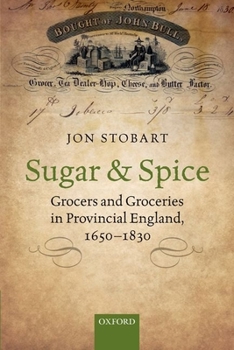Sugar and Spice: Grocers and Groceries in Provincial England, 1650-1830
Select Format
Select Condition 
Book Overview
Consumers in eighteenth-century England were firmly embedded in an expanding world of goods, one that incorporated a range of novel foods (tobacco, chocolate, coffee, and tea) and new supplies of more established commodities, including sugar, spices, and dried fruits. Much has been written about the attraction of these goods, which went from being novelties or expensive luxuries in the mid-seventeenth century to central elements of the British diet...
Format:Paperback
Language:English
ISBN:0198795963
ISBN13:9780198795964
Release Date:January 2017
Publisher:Oxford University Press (UK)
Length:318 Pages
Weight:1.60 lbs.
Dimensions:0.7" x 6.1" x 9.0"
Customer Reviews
0 rating





